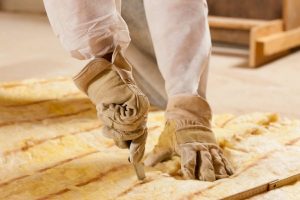What Are SAP Calculations in the UK?
SAP stands for Standard Assessment Procedure. It’s the method the UK government uses to assess and compare the energy and environmental performance of dwellings. Developed by the Building Research Establishment (BRE) on behalf of the government, SAP calculations have been around for several decades.
We use SAP calculations to measure how much energy a home will use over a year and how much carbon dioxide (CO₂) it will emit. These calculations don’t just look at heating systems or insulation. They consider nearly everything that affects a home’s energy use, from the materials used in walls, roofs and floors to the type of windows and heating systems.
These calculations are needed for all new-build residential properties in the UK. They are also required when buildings are converted (like an office turning into flats) or when a significant number of thermal elements are changed, such as during an extension or major refurbishment.
If you’re planning any of these projects, you’ll need SAP calculations before construction starts. They’ll also be needed when the building is finished to make sure it passes Part L of the Building Regulations.
How Part L of the Building Regulations Links with SAP
Part L is one of the many Parts of the Building Regulations in the UK. It deals specifically with the conservation of fuel and power. In short, Part L makes sure that buildings are designed and built with energy use in mind.
There are two main Parts to be aware of:
- Part L1 covers the energy standards for dwellings (homes)
- Part L2 deals with buildings that are not dwellings, like offices or shops
When building or modifying a home, Part L1 is the section that will apply. It ensures that new homes use less energy for heating, lighting, and hot water. To meet Part L1, a new or converted home needs to pass the SAP calculations and receive a good rating.
To prove that a property meets the requirements of Part L, both design-stage and as-built SAP calculations are needed, along with an Energy Performance Certificate (EPC). These steps must be handled by accredited SAP assessors.
We at Ratio Seven help homeowners, developers, and architects take care of these calculations. Whether you’re working on a single new home or a larger development, we make sure it meets all the requirements without hassle.
What SAP Ratings Mean and How They Are Calculated
The outcome of SAP calculations is an energy rating on a scale from 1 to 100+. A higher number means greater energy performance. Homes scoring over 100 are net energy positive; they create more energy than they use. Most homes fall between 40 and 90.
Your SAP rating comes from several different areas:
- Thermal insulation (walls, roofs, floors)
- Heating and hot water systems
- Ventilation and air tightness
- Renewable technologies like solar panels
- Lighting systems
- Windows and doors
All these parts affect how much energy the building will use each year to keep it warm, provide hot water, and run basic systems.
To get a good rating, builders need to select quality materials and systems early in the design phase. Small changes can make a big difference. For instance, adding a few extra centimetres of insulation, using low-energy lighting, or selecting a high-efficiency boiler can all improve the final SAP rating.
When assessments are completed at the design stage, the SAP assessor will flag any points where the current specification might not meet Part L. This way, changes can happen before building starts.
What Part L Means for Builders and Developers
Part L affects nearly every part of a building’s design. As a builder or developer, you need to show evidence at every stage. This includes insulation levels, building fabric details (like thermal bridges), air pressure test results, and information on any renewable systems like heat pumps.
If your design doesn’t meet the standards, you can’t move forward. The build can’t be signed off without a passing SAP assessment and related documentation, such as an EPC and as-built SAP report.
Crucially, Part L doesn’t just look at total emissions. It now places greater weight on:
- Primary energy use
- Carbon impact of heating technologies
- Compliance with Fabric Energy Efficiency (FEE) targets
- Evidence-led building processes, including photographic proof during construction
That’s why it’s always smart to involve SAP assessors during the design stage. At Ratio Seven, we work closely with your design team to make sure that every detail is compliant from the start.
2023 Updates to Part L: You Need to Know
The most recent update to Part L in June 2022 brought in stricter energy targets and new requirements for photographic evidence during construction. These changes came as part of the UK’s move towards the Future Homes Standard due in 2025.
Here’s what’s new now:
- New homes must reduce carbon emissions by at least 31% compared to previous standards
- Greater focus on insulation and low-carbon heating methods
- Mandated evidence through photos during key construction stages
- Buildings must be constructed almost exactly as designed, and what gets built must match the SAP inputs
These changes are pushing developers towards using air source heat pumps, mechanical ventilation systems and solar energy tech in standard homes, not just in high-end builds.
Because of these updates, it’s now even more crucial to work with experienced SAP assessors. At Ratio Seven, we stay up to date with the latest Part L updates to keep your project running smoothly.
The Process: From Initial Plans to Your Energy Certificate
Getting your SAP calculations and EPC certificate involves several stages. Here’s how we handle it at Ratio Seven, step by step:
1. Design Stage SAP Calculation
You send us your architectural plans, HVAC specs and building materials. We create a digital energy model that predicts performance. If the design doesn’t meet Part L yet, we recommend adjustments.
2. Design Stage Compliance Report
We provide reports that prove your planned build is compliant. These are sent to Building Control and help unlock planning permissions or support funding applications.
3. Build Stage Support
During construction, we can help you collect necessary documents like photos showing insulation layers or construction progress. This evidence proves that the build follows the SAP design.
4. Air Pressure Testing
You’ll need to test the building’s airtightness once the physical structure is complete. We coordinate the testing with professionals and input the verified result into the SAP model.
5. As-built SAP and EPC
Finally, we create your as-built SAP calculation using exact specifications and the air test result. If it meets standards, we issue your Energy Performance Certificate.
All this might sound like a lot, but we make it straightforward at Ratio Seven.

How We Help You Stay On Track
Having worked with hundreds of clients across England and Wales, we know the common slip-ups and how to avoid them. When working with us at Ratio Seven,
You can expect:
- Detailed feedback at every stage
- Suggestions for affordable product swaps to stay compliant
- No-nonsense technical answers
- Coordination with your team, no longer email chains
- Reports delivered on time
We know that no project is the same. That’s why our team listens closely to your goals, building type and target market. Whether you’re building to sell, rent or live in yourself, we can help shape a build path that ticks all the right boxes and gets approved by Building Control.
FAQs on SAP and Part L Regulations
Q: Do I need SAP calculations for a small extension?
A: Possibly. If your extension affects 25% or more of the existing thermal elements, like replacing roof and wall insulation, SAP checks may be needed.
Q: Can I do SAP calculations myself?
A: No. SAP assessments must be completed by accredited assessors using approved software. Only professional assessors can issue the official certificate.
Q: How long do SAP calculations take?
A: At Ratio Seven, we aim to return your design stage SAP reports within 2–3 working days after receiving all the details.
Q: What’s the difference between SAP and EPC?
A: SAP is the calculation method to assess energy use. The EPC (Energy Performance Certificate) is the official document that shows the home’s energy efficiency rating.
Q: What happens if my build doesn’t pass Part L at the as-built stage?
A: We’ll work with you to find practical tweaks or design changes, like upgrading insulation or making heating system alterations, to help you meet the standards.
Ready to Get Your Project Moving?
SAP calculations are more than a box-ticking exercise. They help make your home warm, comfortable and better for the environment, while also keeping your project legal.
Meeting Part L of the Building Regulations means planning from the ground up. Get in touch with Ratio Seven today, and we’ll guide you through every step, from design and material selection to testing, final reports, and EPCs.
Let’s build it right from the start.




